Uses & abuses of history, philosophy & cookery: A case study of Hannah Woolley.
1. The family business.
As the daughter of Teresa and Auberon Waugh, Sophia Waugh has been endowed with a considerable literary pedigree. Lady Teresa wrote and translated novels. Her husband, the son of Evelyn Waugh, also wrote novels but was better known for his journalism. Waugh wrote a Private Eye column he insisted was “specifically committed to telling lies” and became editor of the Literary Review , where he instituted the Bad Sex Prize for bad fictional depictions of sex as opposed to depictions of bad sex.
The spouses also published a small culinary gem, The Entertaining Book , in 1986. She wrote the text on food, although Entertaining blocks out no recipes per se, and he added notes on the appropriate wine for each of her presentations. The tone is light but opinionated in the (good) extreme and a little bossy, something like Elizabeth David without the ugly attitude.
The Waughs were very much products of their transitional time in culinary terms. They display a lingering Francophilia (they owned a house in the Languedoc) tempered with a discerning suspicion of emergent French failings in the kitchen. They also, as befits their High Tory lineage, retain a fondness for traditional English food.
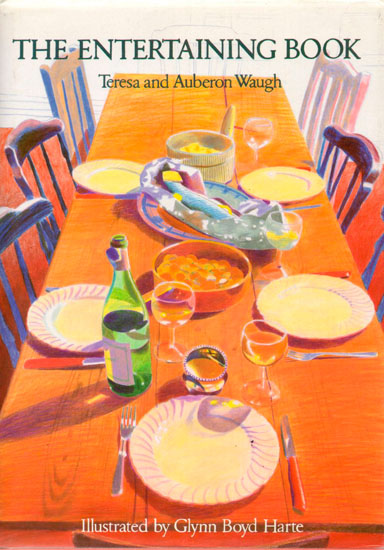
2. No cannibalism please, we’re English.
Daughter Sophie published four novels and a biography. She now has added Cooking People. The volume is not, as the unintentionally ambiguous title might indicate, a cookbook for cannibals. Its subtitle explains instead that the book concerns “The Writers Who Taught The English How To Eat.” These writers are, according to Cooking People , Hannah Woolley, Hannah Glasse, Eliza Acton and David.
The selection of sources invites respectful skepticism. It would be insensate not to notice that all of them are women, which on reflection is fine. Unlike other cultures, the Anglo-American world has welcomed the work of women who wrote cookbooks with runaway sales since the eighteenth century and the pattern continues today. Nonetheless a lot of men have influenced British foodways, including Dr. Kitchiner in the eighteenth century; Alexis Soyer and Charles Francatelli in the nineteenth; and Ambrose Heath, Fergus Henderson, Jamie Oliver and Gordon Ramsay in the twentieth and twenty-first.
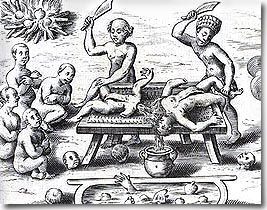
Glasse and Acton each published an influential book that attracted a wide readership, while according to conventional wisdom David stands as the titan of twentieth century food writing. The quality of her prose may be uneven and many of her recipes are poor, but in terms of impact David was profound. She wrote several even more influential volumes than Glasse or Acton along with lots of magazine articles. Waugh, however, has decided to address only the first of her several books besotted with France . That is not a bad decision. A Book of Mediterranean Food hit Britain so hard it revolutionized the nation’s attitude toward eating and even threatened to extinguish the indigenous foodways recorded by Glasse in the eighteenth and Acton in the nineteenth centuries.
Woolley, or Wolley as she sometimes appears, is considerably more obscure than the other members of Waugh’s quartet. In part that is because she was active during the seventeenth century, a decidedly premodern era in terms of food. Medieval mixing of savory and sweet informs most of her recipes so they do not appeal to twenty-first century palates. And yet other seventeenth century authors are well known and widely cited, at least in serious culinary circles, including Sir Kenelm Digby, Gervase Markham and Robert May, all male and all cooks to the English elite.
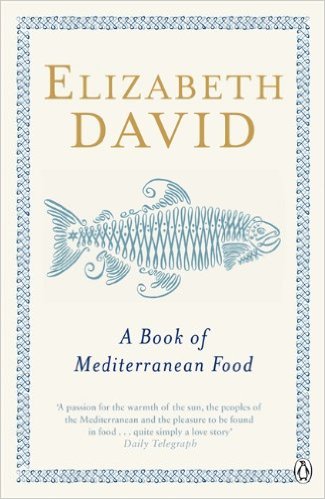
Down with British Food!
3. A dubious honor.
Woolley did attract the attention of Judy Chicago in 1979 for “The Dinner Party,” but not Maria Manhattan, who parodied the party with “Box Lunch” a year later. Chicago’s cavalcade of vulvas also included britishfoodinamerica acquaintances Virginia Woolf, who like Elizabeth I got one of thirty-nine porcelain plates decorated as vaginas, and Anne Bonney, the early eighteenth century bisexual pirate. She and Woolley did not make it to the dinner table: Their names only lie beneath the massive triangular (get it?) table inscribed on tiles along with 997 others. No genitalia for any of them.
Some of Chicago’s choices seem strange. Bonney after all was a homicidal maniac. If it is politically correct to canonize a killer, why not also include Mary Read, her partner in crime and in bed? Woolley herself is the only figure among the 1,038 connected to cookery, traditionally a female task across all cultures. According to Waugh she does represent the earliest female author in print, but her influence pales in comparison to, say, Glasse, Acton or David.
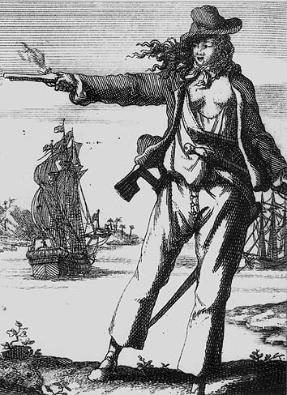
And what about Elizabeth Raffald, an enterprising eighteenth century Mancunian who not only wrote a runaway hit in The Experienced English Housekeeper (“the book that was her particular pride”) but also operated an inn and a shop selling perfume, cosmetics and toiletries, along with all manner of groceries and prepared food including baked goods and confectionary. She also organized the first ‘Register Office’ in Manchester, “where servants seeking work were introduced to employers seeking servants.” (Shipperbottom x, xi, xii) These were astonishing accomplishments for a woman anywhere in the world at the time.
The inclusion of Woolf is unequivocally weird. As Maureen Mullarkey has pointed out, symbolizing Woolf as a vagina entails no small irony:
Virginia Woolf (“Pioneer in creating a female form language in literature”), a woman with a profound and imperious genius for making distinctions, is just one more floral orifice in Chicago’s line-up. Either Chicago doesn’t know or doesn’t care that Woolf insisted repeatedly: ‘Any emphasis, either of pride or of shame, laid consciously on the sex of a writer is not only irritating but superfluous.’” (Mullarkey 4)
The dissonance runs deeper because Woolf had extreme “sexual difficulties.” (Gerzina 116) She was extremely uncomfortable with her sexuality, was for the most part erotically repressed in the otherwise libertine land of Bloomsbury and refused her husband relations while tormenting him with serial suicide attempts. Maybe the celibate marriage was a ‘feminist’ selling point for Chicago but we cannot know because she does not say.
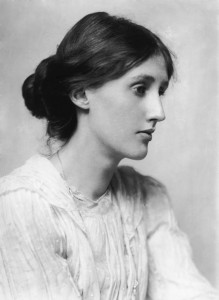
The irrelevance of sex.
4. Fasting until lunchtime is the better option.
Mullarkey deplores a lot more about “The Dinner Party” than the selection of Woolf. She likens the huge work to revivalist hucksterism: “After the fundamentalism of the cross and the flag, we now have the fundamentalism of the vagina.” The party is shrill and humorless and wreathed in the written word, placed on placards around the table “that look and read like a fold-out time-line in a grammar school history text.” (Mullarkey 3)
Mullarkey’s assessment is savage:
“The lackluster prose, with its earnest attention to irrelevant detail, is indicative of The Dinner Party’s overriding sensibility.
The preachiness of the exhibition is outdone only by the prettiness of it. This is a very pretty show--in the way that limited edition plates marketed by the Royal Dutch Horticultural Society are pretty. Chicago’s plates are the Hummel figurines of the feminist movement.

Nature calls a feminist.
It is the vapid prettiness of the imagery, not its explicit sexual reference, that aligns the exhibition with Playboy and Penthouse . [It was 1981 when Mullarkey wrote “The Dinner Party is a Church Supper”] It shares with the air-brushed nudes in center-fold displays a dogged refusal to regard the real thing. Substituting titillation for discernment, The Dinner Party distorts the women,” pace Woolf, “it pretends to commemorate.” (Mullarkey 3-4)
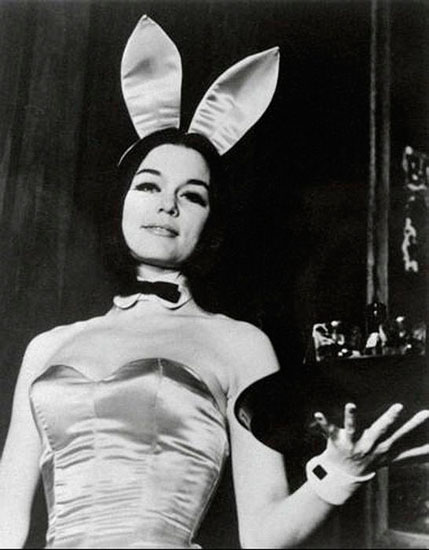
Feminist icon.
The artistic process itself was an exercise in hypocrisy. Chicago described her party as a salvo in “the class struggle based on the division between men and women,” whatever that means, but it was in reality a crass example of the exploitation she (apparently) decries:
“Unpaid workers, mostly young, anonymous women from inconspicuous places around the country, paid their own transportation to and from the West Coast workshops and their own living expenses for the duration of their participation.”
At the same time, three male artisans received salaries. (Mullarkey 7-8)
‘Maria Manhattan’ spent considerably less than Chicago’s millions of dollars to create “Box Lunch.” If the party is humorless the lunch is a hoot. “As an artist,” Manhattan explained in a satiric echo of Chicago’s obsessive self-promotion, “I have been struggling to create a brilliant piece of art that will both honor these women and catapult me to national fame.” (Manhattan)
Manhattan dispensed with the 999 names but did ‘install’ a “more than a floor, floor” and festooned the entrance hall with clotheslines and laundry. Pink cardboard donut boxes scattered round flimsy tables symbolize “thirty-nine women of dubious distinction…. the greats, the near greats and the ingrates.” They included Rosemary Woods (“How I Set Secretaries Back 20 Years”), Mrs. Henny Youngman, Lassie (represented by her tail), Scarlett O’Hara, Minnie Mouse and Milton Berle. Neither Woolley nor any other English cookbook author made the cut, but both Julia Child and Betty Crocker got boxes. (Manhattan)
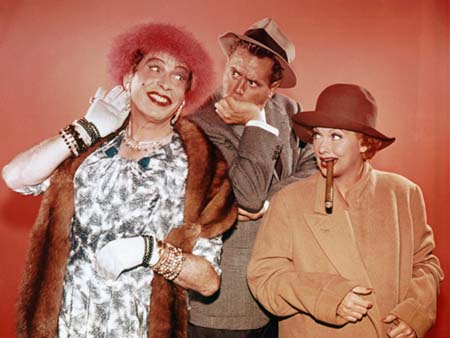
Another feminist icon.
5. A wry woman of many skills.
Woolley herself displays a bluff sensibility. In The Accomplish’d Lady’s Delight she declares “I would not willingly dye while I live nor be forgotten when I am dead.” She also makes the bold claim that the book “containeth more than all the Books that ever I saw Printed in this Nature, they rather being Confounders, than Instructors,” which is not necessarily unfair considered alongside the work of her contemporaries. (Waugh 19)
Woolley’s recipes may not entice the contemporary cook but her bumptious common sense retains a certain timeless appeal. In her subchapter from The Gentlewoman’s Companion called “Of Fashions, and their ridiculous apish imitation,” Woolley explains that “Farthingals of old, were politickly invented to hide the shame of great Bellies unlawfully puft up.” As she confides, however, “I am not of that Cynical and morose temper of some, who affirm all gorgeous apparel is the attire of sin;” after all, “it is impossible there should be youth without some vanity.” ( Companion 56, 57)
For despite her stern warnings, among them to “[l]et your prudence renounce a little pleasure for a great deal of danger” and refrain from singing obscene songs “and idle Ballads,” Woolley was no killjoy. She considered the four “Recreations and Pleasures… most fitting and proper for young Gentlewomen” to be “Musick, Dancing, Limning and Reading.” ( Companion 84, 75)
For a change, it would not be anachronistic to claim this early modern figure for feminism, at least in terms of education, although on the subservience of wife to husband Woolley sounds as bad as any twenty-first century evangelical. The first words of The Gentlewoman’s Companion amount to an ardent if ineffectual manifesto.
“The right Education of the Female Sex, as it is a manner everywhere neglected, so it ought to be generally lamented…. Certainly Man’s Coul [sic] cannot boast of a more sublime Original than ours, they had equally their esslux [probably equivalent to efflux, or outflow] from the same Immensity, and therefore capable of the same Improvement by good Education. Vain man is apt to think we were merely intended for the Worlds propagation, and to keep its humane inhabitants sweet and clean; but, by their leaves, had we the fame [same?] literature, he would find our brains as fruitful as our bodies…. ” ( Companion 1)
6. The call of commerce.
Of course the ‘manifesto’ also amounts to a sales pitch. Husbands ought to allow the purchase of didactic material like The Gentlewoman’s Companion for their wives and daughters. Nonetheless Woolley’s opinion appears to have been heartfelt. She had no commercial motive to assail the curriculum at English universities (then limited to the two) more generally, as she did:
“I cannot but complain of, and must condemn the great negligence of Parents, in letting the fertile ground of their daughters lie fallow, yet send the barren Noddles of their sons to the University, where they stay for no other purpose than to fil their empty Sconces with idle notions.” ( Companion 2)
 Stay away.
Stay away.
Or did she have a commercial motive? Waugh, Elaine Hobby and others have seized upon this passage as demonstrating that Woolley “is both of her time, and surprisingly ahead of it” (Waugh 21) but something more is at work. Woolley was no intellectual, and the persona she created in her publications was pragmatic. She had operated boarding schools with her first husband before turning her hand to writing the cookbooks and instructional manuals after his death.
In addition to recipes, Woolley offered a raft of practical advice, concerning comportment (“Fill not your mouth so full, that your cheeks shall swell like a pair of Scotch bag-pipes…. ”) and deportment (including “Gait and Gesture”); conversational skills and the etiquette of correspondence; embroidery; household management; and most important to her income, “Physick and Cirurgery.” Along the way to a certain celebrity on account of her guidebooks, Woolley had earned recognition as a skillful physician and promoted her practice with her books, which solicit readers to seek her out for treatment.
Antipathy to the theories of Cambridge and Oxford is a component of her persona, and since most of her readers, who for the most part came from the ‘middling sort,’ could not send their sons to the universities anyway, deprecating them could strike a comforting chord. Besides, money might be better spent elsewhere--on things like Woolley’s guides to living the seventeenth century good life.
7. Woolley in hermeneutic redux, or, oikos meets polis in the epochal chiasmus at the inward-looking precincts of a taskscape.
As Waugh concedes, “Woolley is no longer a household word.” (Waugh 20) Proof of Woolley’s obscurity lies in her selection by Julia Lupton as one of the two figures for consideration in “Thinking with Things: Hannah Woolley to Hannah Arendt.” Lupton, who teaches English at California Davis, has a doctorate in Renaissance Studies from Yale. Even so, “Thinking with Things” gets off to a promising start rendered with jolly humor in reasonable enough prose.
Please bear with the unfashionably long quotation: It really is quite good.
“To read Woolley for scenes of thought (rather than for lark pie, or pigs stuffed with puddings, or conserves of roses,) may seem perverse, like reading the PMLA for fashion tips. Indeed, in one of my favorite New Yorker essays, Adam Gopnik writes that you can’t think and cook at the same time. What he means, I think, is that you can’t do higher order thinking --like solving the mind-body problem or understanding your university’s exciting new post-employment policies--while engaging in higher order cooking (which includes any recipe featuring the words ‘foam,’ ‘emulsion,’ ‘granita,’ or ‘tar tare’) You might, however, do some lower order thinking (such as itemizing the excellence of sabbaticals or the virtues of children without lice) while engaged in some lower order cooking (such as plattering an elegant array of carry-out burritos and left-over pizza on a weary Wednesday eve)….
In this essay, I’d like to read Woolley’s compendium for signs of this interplay, a dynamic between hand, eye, mind, and the objects and materials on the table that I will call, following her latter-day namesake Hannah Arendt, judgment . Ever since Kant, of course, judgment has been explicitly allied with taste, though I don’t think he had lettuce pie or bullock’s cheek in mind. How do judgments of taste in the higher sense arise out of acts of tasting in the baser sense? How does cooking become a school for thought, and for thought of what sort?” (Lupton 1)
This is parody on par with “Box Lunch” but apparently neither Postmedieval , the journal that published the essay, her ‘crowd reviewers’ ( Postmedieval posts forthcoming essays online for comment) nor Lupton herself got the joke. To be fair to all concerned, after the outset of the essay she teleports its prose to an alternative universe in which the obscure and obtuse earn the big bonus points.
On reflection the hints appeared from the outset, from the offhand shorthand for the Proceedings of the Modern Language Association to the portentious italics and reference to “Kant, of course.” And then--of course--we come to Hannah Arendt along with an assumption of familiarity with her rather abstruse work.
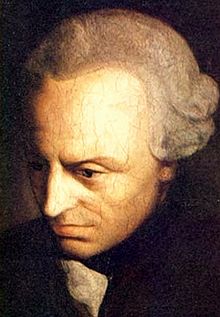
Everyone knows Immanuel.
Before then, however, it bears noting that Lupton has set her sights on a narrow audience, an in-crowd that revels in the overwrought obfuscation of the obscure. A house is not a house in this world; it is the Greek for house, oikos. A kitchen is not a kitchen either. It is a “kitchen-studio,” “kitchen-laboratory” or, better, a “taskscape” with a “layered terrain of affordance.” There, Lupton explains,
“thought unfolds between the human agent and the objects in her immediate environment. Objects in the taskscape prompt thoughtful action through their particular affordances, indicators that can be enhanced by designers attuned to their cognitive potential.”
A “taskscape” is, according to Lupton, “a layout defined by the purposeful movement of human and nonhuman actors through its layered terrain of affordance;” “affordances,” in turn “concern the possible actions that an object or environmental feature solicits in the animal that perceives it.” (Lupton 3, 7)
If we translate all this into ordinary English with reference to a dictionary for the benefit of a general audience it reads something like:
‘In the kitchen of a house, a cook along with her pots and other implements think about each other. They all move independently and with conscious purpose cook, pots and other implements execute their movements at differing levels of the material or geological world as well as of metaphysical possibility.
The pots and other things in the kitchen other than the cook therefore either incite her to do something or make her thoughtfully angry because they have qualities or attributes which indicate or clarify how they can or should be used. Some makers of kitchen equipment such as pots make them better by understanding the conscious intellectual ability of the pots in the future.
The qualities or attributes of the things like pots that indicate or clarify how they can or should be used either ask the cook, an animal, to do something or offer to have sex with her for money as long as she can see them.’

Hey big boy.
Apologies to Merriam-Webster and to Tim Ingold, who did us the favor of coining the term ‘affordance,’ but this would not appear to get the less intelligent of us, who try to confer on words their ordinary meaning, much past the incomprehensibility of the original brainteaser.
8. A neurosurgeon contemplates his fish stew and the world--or not.
So Lupton’s essay demonstrates that it is past time for the Editor to concede her intellectual disability. As if an example were required, Lupton’s approving reference to Adam Gopnik illustrates the point. In “Cooked Books” he considers it impossible to think in any intellectual manner while cooking. Gopnik, citing Ian McEwan’s “superb” Saturday , claims it is implausible for the neurosurgeon at the center of his story to think about issues of heart and mind while assembling “a kind of English bouillabaisse.” (Lupton 1; Gopnik)
McEwan’s brainy surgeon witnesses, if only via television, the aftermath of the attacks on the World Trade Center and consequent runup to the second war on Iraq while he chops, crushes and simmers the elements of his Frangloid fish stew. During the process he “broods on ‘monstrous and spectacular scenes.’” (Gopnik quoting McEwen) But unlike his creator, neither Gopnik nor Lupton can credit the thoughtful doctor with any reflection on the terror attack or revolution in the Middle East. According to Gopnik:
“It’s a tribute to McEwan’s powers of persuasion that the scene would never work that way in reality. You can’t idly make a bouillabaisse while you brood on modern life any more than you can idly make a cassoulet; these are nerve-wracking concoctions.” (Gopnik)
Gopnik grants McEwen unwonted credit, as McEwen might agree. A dedicated cook himself, McEwen would know that there is nothing nerve-wracking about cassoulet. Particular ingredients do not much matter, their proportions do not much matter, timing does not much matter, precise temperature does not much matter. It is a forgiving exercise conducive to absent-minded reflection, similar to assembling red beans and rice for the anniversary of Armstrong’s birthday. Like flying an aircraft, these dishes require only short bursts of concentration that punctuate expansive opportunities for contemplation.
The Editor thinks some of her loftier thoughts while cooking, and keeps a notebook on the counter to write them down. It is spattered and stained and many of its musings have found their way into publications as varied as this magazine, Petits Propos Culinaires and the Oxford Dictionary of National Biography. But then the Editor’s thoughts may not be all that lofty and by no means approach the heights inhabited by Arendt or Lupton.
Even so, or perhaps due to the Editor’s lack of innate intelligence, it is difficult to imagine how any of this has anything to do with Woolley’s work, which in context it would be easy to forget consists of cookbooks and household manuals rather than ill-written musings on metaphysics and metatexts. Her own practical personality would have had no truck with taskscapes or affordances; she called a spade a spade, and even a house a house.
9. Beware of writers pushing palindromes.
Why, then, given our failure to comprehend its purpose, would so populist a periodical as britishfoodinamerica even address “Thinking with Things?” The answer is blunt. “Thinking” matters because so little else addresses Woolley, and the essay’s anachronistic spin on her work distorts it and her aims beyond recognition. The unsuspecting researcher will encounter Lupton’s essay following the briefest Google search and could take it seriously to the extent she could take it at all.
“Thinking with Things” is the kind of thing that can all too easily become Exhibit A to something like Scott Walker’s brief for destroying the University of Wisconsin or incite the creation of another Tea Party chapter.

No literature please, we’re Republicans.
In part Lupton’s unfortunate take on Woolley stems from the central conceit of her essay, which brings us back to Arendt. Lupton has tried to tie her to Woolley, apparently because they share a palindromic given name and address utterly disparate topics. “Yoking the two Hannah’s [sic] together, across the centuries, continents, and genres of their very different spheres of thought and action creates a double palindrome, an epochal chiasmus.” (Lupton 8) It does not, however, create a convincing connection between them.
10. Controversy and complication implicating Kant and the kitchen.
Arendt is a controversial and complicated, not to say tortuous thinker. Her critics, including Ron Rosenbaum, who decries Arendt’s “overinflated, underexamined reputation,” and perhaps most notably Bernard Wasserstein, have accused her of many sins, including anti-Semitism. (Rosenbaum)
Irving Horowitz in turn has attacked Wasserstein for his “transparent bias and animus against Arendt” and even for “what amounts to unmitigated, if disingenuous, slander” but then Horowitz is the Hannah Arendt Distinguished Professor Emeritus of Political Science and Sociology at Rutgers. (Horowitz)
Even the unabashedly admiring Margaret Canovan found it necessary to note in her introduction to a second edition of The Human Condition that “few other works of political theory have had such a mixed press, regarded by some as a work of genius and by others as beneath refutation.” (Canovan xv) This is not the place for that debate, although it bears noting that Lupton never alludes to it, and instead accepts as a given the validity of Arendt’s theories.
Arendt sought to impose intellectual order on otherwise incomprehensible events like the holocaust; no contingency theory of history for her. The philosophical structure that she laboriously built, however, contains enough tensions to bring it down. Wasserstein for one goes even further. He contends that her “oracular prose” is “self-contradictory” on issues central to her syllogism.
Arendt, for example, failed to reconcile two conflicting theories of “judgment,” one based on the actor, the other on the spectator. The concept is crucial to her political philosophy because, “as the faculty of retrospective assessment,” it is the only thing “that allows meaning to be redeemed from the past.” (d’Entreves 15)
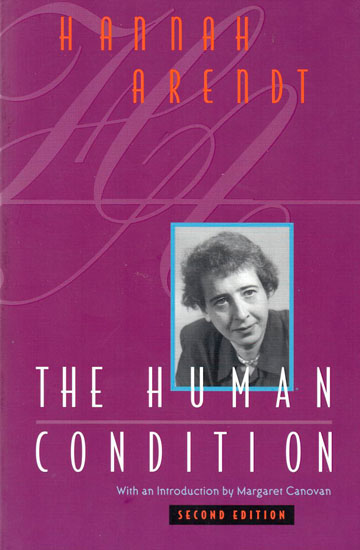
She just dropped in to see what
condition her condition was in.
For Arendt, judgment also entails an “ability to think ‘representatively,’ that is, from the standpoint of everybody else…. And this ability, in turn, can only be acquired in a public forum where individuals have the opportunity to exchange their opinions…. ” (d’Entreves 19) It should be apparent that in the hands of Arendt, whatever in fact it is, judgment no longer retains its ordinary meaning of decision, conclusion or common sense.
As Maurizio d’Entreves notes, “Arendt did not clarify the status of judgment with respect to two of its philosophical sources” either, “Aristotle and Kant. The two conceptions seem to pull in opposite directions, the Aristotilian toward a concern with the particular, the Kantian toward a concern with universality and impartiality.” While d’Entreves also considers the “contradiction more apparent than real” in some respects, in others it seems palpable enough. (d’Entreves 15)
11…. Acting!
“Action” and “taste” are but two other examples of terms Arendt has transformed from ordinary usage. D’Entreves requires eight pages to summarize her theory of action, which she distinguishes from labor and work, in the Stanford Dictionary of Philosophy. Action encompasses freedom and plurality, which in turn involve both distinction and equality; action is not the undertaking of any individual but rather requires interaction with others. As d’Entreves explains, action and speech entail one another, while their linkage embodies Arendt’s conception of power. (d’Entreves 9)
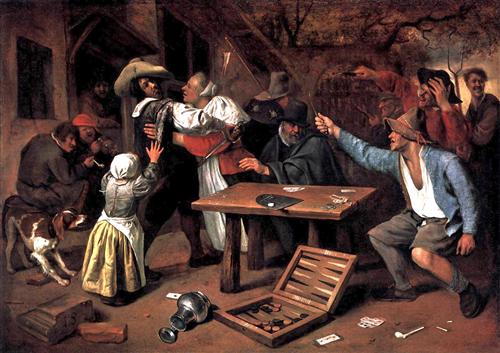
The embodiment of action.
Action may involve deeds as well as speech, but without speech deeds border on meaningless. That is not to claim that action involves a replicable lecture or operation. Instead, action is boundless and unpredictable. It is impossible for any actor to control the consequences of her deeds or speech because
“every action becomes a chain reaction and… every process is the cause of new processes… the smallest act in the most limited circumstances bears the seed of the same boundlessness, because one deed, and sometimes one word, suffices to change every constellation.” ( Human Condition 190)
For that reason, action is irreversible. D’Entreves offers a useful example of how it is irreversible and why it is different from labor. Action, “while primarily symbolic,” is a lot more powerful:
“Every action sets off processes which cannot be undone or retrieved in the way, say, we are able to undo a faulty product of our hands. If one builds an artifact and is not satisfied with it, it can always be destroyed and recreated again. This is impossible where action is concerned…. ” (d’Entreves 9, 13)
Finally for our quotidian purpose, action also entails the faculties of promising and forgiving, which in turn depend on plurality, or the action of others, because nobody can either forgive herself or promise herself anything. Promising and forgiving are expressions of freedom because they temper the unpredictability and irreversibility of action. Without promises or forgiveness, people would be nothing but prisoners “of an automatic necessity bearing all the marks of inexorable laws.” ( Human Condition 246)
At least in comparison to action, labor is debasing. To rely again on the succinct and superb summary of Arendt’s theory by d’Entreves:
“Neither labor nor work enable individuals to disclose their identities, to reveal ‘who’ they are as distinct from ‘what’ they are. In labor the individuality of each person is submerged by being bound to a chain of natural necessities, to the constraints imposed by biological survival. When we engage in labor we can only show our sameness…. ” (d’Entreves 9)
Assuming the truth of the assertion, if strictly for the purpose of argument, its implications about the attitude of Arendt to the vast majority of the human population could be considered frightening, but perhaps we digress.
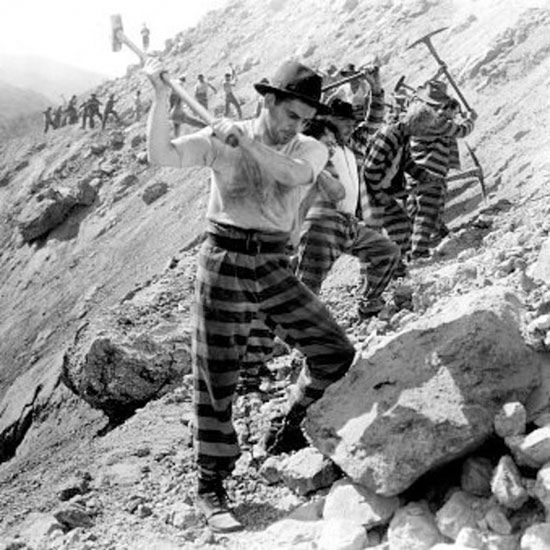
Natural necessities.
12. Is it food for thought or is it only food?
For those of us still attempting to pay attention to the lecture we now shall turn to “taste,” which will involve further consideration of Kant. At the outset, as readers may guess, and even Lupton must admit, “taste” in the peculiar context of Arendt is neither alimentary nor linked to any other conventional meaning of the word. Instead, Arendt tied the term taste to her conception of “political judgment.”
Arendt based her theory of political judgment on Kant’s “Critique of Aesthetic Judgment” because, she maintained, it embodies his unwritten political philosophy, even though Kant himself believed his political outlook arose from practical reason and not from any aesthetic sense.
By tying this faculty in turn “to that wider manner of thinking which Kant called an ‘enlarged mentality’ the way was opened,” for Arendt anyway, “to a revaluation of judgment as a specific political ability, namely, as the ability to think in the place of everybody else.” (d’Entreves 17)
The “Critique” therefore became indispensable to her because she believed “it dealt with the world of appearances from the point of view of the judging spectator and took as its starting point the faculty of taste, understood as a faculty of concrete and embodied subjects.” (d’Entreves 17)
The spectators (as opposed to actors) “have the privilege of judging impartially and disinterestedly, and in doing so they exercise two crucial faculties, imagination and common sense .” Leaving to one side imagination, “common sense” is just another word whose meaning Arendt has chosen to subvert. She does not accept its common sense meaning, what any self-respecting Yankee of a certain age would describe as horse sense; something like a New Yorker’s conception of street sense. Instead, Arendt’s common sense refers to Kant’s “sensus communis,” the transcendence of “private or subjective conditions in favor of public and intersubjective ones” through which we appeal “to our community sense.” (d”Entreves 18)
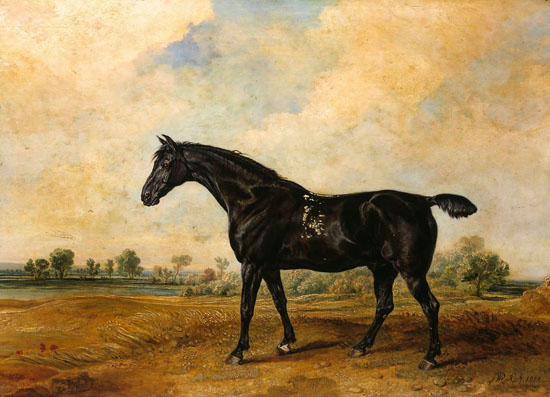
13. Meanings without meaning.
As the gyrations involving these terms infer, words do not necessarily retain their ordinary meaning in Arendt’s work. We may as well call common sense menstruation, moped or myxomatosis; any random word would do. Arendt wrote neither for a general audience or strictly for profit but even so her stripping words of their accepted meaning would appear perverse.
Philosophy, political theory or any other form of nonfiction ought to be crafted in a way that renders it accessible rather than inscrutable. English in that context ought not to be an elitist’s playground of the obscure. Finnegan’s Wake strays that way, but whether we consider Joyce ingenious or self-indulgent, he was after all writing fiction.
Despite or perhaps because of her own proclivities, Lupton elides any such distinctions between accepted and idiosyncratic usage in her effort to link the twentieth century philosopher to a seventeenth century cook. Her breezy conflation of conflicting concepts that coincidentally share a common term does not, however, establish a legitimate link between Woolley and Arendt.
According to Lupton, “the French so suggestively call” common sense “the ‘good sense,’ le bon sens ,” which sounds something like the Yankee understanding of the term. (Lupton 8)
It is not, however, Arendt’s understanding. In her writings, common sense involves “the communicability of judgments of taste, and the correlative notion of an enlarged mentality,” which connects “effortlessly with Kant’s idea of a united mankind living in eternal peace.” (d’Entreves 18)
Woolley would have had none of this, as, ironically, Lupton implies when she properly describes Woolley’s work as an example of “the writings of ‘those whose smallest domestic endeavors have become urgent and precious in the wake of dislocation, whether as the result of migration, divorce, poverty, or a stigmatized sexuality,’” and refers to the form letters Woolley includes as templates for her readers to use for various kinds of condolence letters. (Lupton 2) Hers was not a peaceful world in either oikos or polis and she harbored no illusion about creating a New Jerusalem following the horrors of civil war.
And while Arendt couches her political philosophy in terms of “public and intersubjective” discourse as an appeal to a “community sense” in which “individuals have to appeal to the judgments and opinions of others” (d’Entreves 19), Woolley’s domestic pronouncements are oracular, prescriptive and nothing if not practical (or commonsensical) as opposed to philosophical.
14. Comparing the artificial to the ordinary.
Lupton’s conflation of disparate definitions is, as previously noted, the only way she manages to link Woolley with Arendt. “Cooking is action as well as activity ,” according to Lupton,
“unfolding in a social and seasonal scene of nested economies and creaturely vulnerabilities. If a recipe calls for ‘morning milk,’ a cow must be chewing its cud nearby. A recipe to ‘To make Misers for children to eat in Afternoons in summer’ orients the kitchen towards distinct stages of life as well as the rotation of day and year.” (Lupton 2; emphasis in original)
These assertions, if couched in portentious prose, appear painfully self-evident.
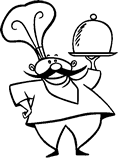
Active action.
Cooks do move about as well as handle things; they do cook for people in addition to themselves and share mealtimes; they have used and (sometimes) still use seasonal ingredients (although during the seventeenth century households like those of Woolley’s readers relied on preserved foods during the harsher months to an extent we can hardly imagine); they often perform a number of interrelated tasks (they wash dishes and kitchen linens, among other chores) in a house; and they, the nearby cow and all other creatures may be at risk of harm from unexpected or unavoidable calamity.
Lupton, however, has written “Thinking with Things” strictly in reference to Arendt, and even highlighted “action,” the word central to her superstructure of political philosophy . Following her definition of the word, action cannot be undertaken alone; has Lupton ever cooked by herself? Can a single deed done in the kitchen, “and sometimes one word” spoken there, “suffice [ ] to change every constellation?” And if a deed is done there, is it meaningless in the absence of the spoken word even though the food reaches the table? Is the cook forgiving her colleagues and diners as she works, or promising them particular things at a later time?
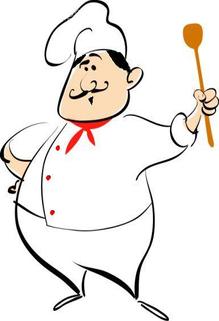
Not action after all.
Even in the context of Arendt’s philosophy, it would be difficult to make the case that Lupton’s other observations--from cow’s making milk to cooking at different times of the year for people of different ages--do not apply equally to just about any collection of recipes.
When not engaged in willful or inadvertent obfuscation, “Thinking with Things” recapitulates any number of similar self-evident observations miscast as revelations. In these passages Lupton resembles nothing so much as the bar boor infatuated with his own voice. It takes the better part of a page to explain that Woolley uses “enough” and “not too much” as synonyms for “done.” “Enough often appears as the sweet spot between too little and too much,” intones Lupton, prompting her exasperated reader to wonder where else the word ever would appear.
Because Woolley instructs her reader not to overcook her food, Lupton detonates the insightful bombshell that “[c]ooking appears here as a set of graduated processes that require the cook to know when to stop. Cooks and other lovers call it timing.” (Lupton 5)
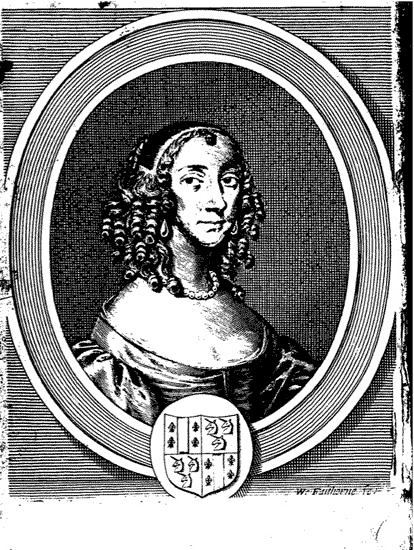
Good in bed?
The rest of us will be forgiven for calling “a set of graduated processes” for cooking a “recipe” and will justifiably wonder at the allusion to sex; perhaps Lupton has taken a leaf from the Arendt manual and “lovers” in context does not mean lovers at all. But, in any context, and leaving the erotic on one side, how does any of this differ in any way from any other but the most uninstructive cookbook?
Which brings us to a larger question: Why has Lupton chosen Woolley in the first place? Her recipes, tinctures and other remedies do not differ much from those of her contemporaries, although she also offers instruction in angling. Otherwise she was hardly innovative, in culinary terms very much a creature of her times all but indistinguishable from Digby, Markham, May or even la Varenne, whose cookbook had been translated for English publication in 1653.
Like them, Woolley follows the conventions of her time in tying herself to nobility and even the crown (in one of her books she makes the rather dubious claim to have cooked for Charles I); maintaining “that she uses her time well and so can encourage other women to be usefully employed;” while also affecting an air of self-effacement. (Hobby 167, 168)
Woolley shares with these writers, and every culinary writer of the time, a pre- to early modern sensibility in her devotion both to elaborate court cookery and to a contrasting frugality. Whether ‘English’ or ‘French’--and Woolley purports to master both cuisines--that admixture strange to us of savory and sweet permeates dishes laced with preserved products (anchovies, capers) and spice (cinnamon, clove, mace, nutmeg). Sugar is almost omnipresent and as likely to flavor stewed lamb as to sweeten fruit pie.
Like her English contemporaries, Woolley looked back to medieval tradition instead of hoping to create a new culinary world. Nor does she really have designs on social change notwithstanding her criticism of Oxford and Cambridge:
“She is not seeking to upset the social order: it is the tradition of aristocratic and genteel hospitality that provides some of the market for her more fanciful recipes. If she is to reach her maximum market, however, she also needs to sell to servants” so a considerable proportion of, for example, The Queen-like Closet “is preoccupied with servants’ duties.”
Woolley, however, was not striving to sell to a universal market. “If The Queen-like Closet is divided over the problem of which class it is addressing, it is quite certain as to the gender of its audience” and it is female. (Hobby 169)
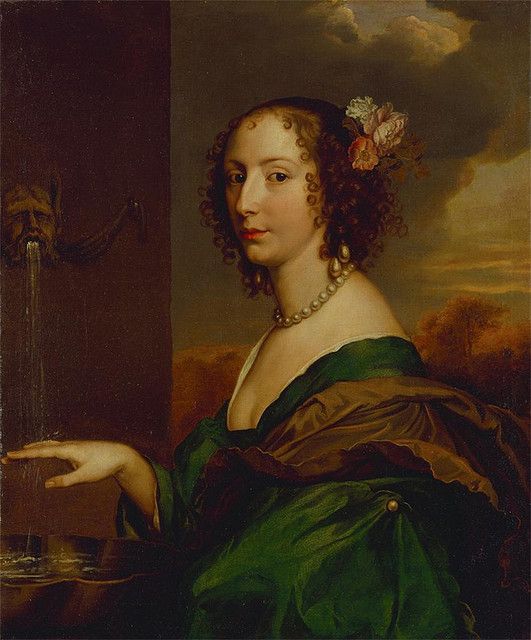
A soldier in “Woolley’s Army”.
Arendt in contrast did want to improve the lot of mankind by transforming society and did occupy herself with universals. The examples of action she cites evince a fascination with turmoil, the American and French revolutions among them.
She did not, however, trouble herself much with women who, for example, feature not at all in The Human Condition despite its encompassing title, aside from a handful of notes on childbirth and their exclusion from classical political engagement.
And why address any author of cookbooks or practical manuals in terms of Arendt? It is hard to visualize her with a fishing pole in hand, or engaged in any form of physical labor. After all, to her labor in itself has little value, let alone dignity, especially compared with ‘action.’ According to the logic implicit in Arendt’s theory of action, the speeches of Robespierre have more significance than the thousands of working people whose deaths he caused or any of the cooks Woolley may have taught.
The household itself is a product of necessity and a most unsatisfactory place. Arendt maintains that in classical Attican philosophy, “within the realm of the household, freedom did not exist,” and she appears to agree. The polis, the public as opposed to private realm, is the only worthwhile focus of human effort, because
“no activity can become excellent if the world does not provide a proper place for its exercise. Neither education nor ingenuity nor talent can replace the constituent elements of the public realm, which make it the proper place for human excellence.” ( Human Condition 32, 49)
By these lights Woolley’s work is not worth consideration.
If she and Arendt are writing with different motivation about different subjects, immersed in different spheres, embracing different social philosophies and political views, addressing different audiences and living in societies mutually unfathomable to each other, “[h]ow,” to repeat Lupton’s question, “finally, do we bridge the distance between Hannah Woolley and Hannah Arendt?” (Lupton 8)
15. Hey buddy, I’ve got a bridge for sale.
Lupton’s span looks like this:
“For both Hannah’s [sic], the exercise of judgment functions to disclose and maintain--to ‘keep,’ if you will--a common world that exists beyond sense impressions and yet is built through them, not passively but through acts of tactical and tactile engagement with tableaux that solicit evaluation, prompt decision, and stimulate fancy…. ”
Tableaux solicit evaluation?

Demanding your attention.
Does this mean that ingredients demand preparation and cooking from the cook, in the same way as ideas require articulation by the philosopher? If so, how is anything in Arendt ‘tactile?’ And does kitchenwork require a tactician? For that matter, should Arendt’s actor ever behave in a tactical manner rather than attempting to promote the greater good? The passage would appear both overwritten and impenetrable, an effort to obscure the fact that the connections being bruited cannot connect.
At this juncture Lupton does admit to a certain difference involving the work of the two women:
“The sphere of praxis delimited by Arendt’s acts of judgment unfurls in a wider, more public circle of objects, activities and conversations, whereas Woolley remains for the most part very close to the trestle table, the chafing dish, the hearth store. For Arendt taste is aesthetic, and for Woolley, alimentary.”
In fact ‘taste’ means contrasting things in the contrasting context of the two women’s work. But, really, the “sphere of Praxis… unfurls?” Is it actually a sphere, and if so how does a sphere unfurl, or is it something else, a word misdefined in the manner of Arendt? Is this sphere a scroll or has it got, or is it, curtains? Perhaps it is a roll of carpet waiting to be kicked across the floor for a dignitary, or perhaps Lupton merely has jumbled her metaphors in the manner of the iconic grammatical car crash that goes something like ‘life is a kaleidoscopic bowl of fun and we live it to the hilt.’
Notwithstanding the distinction between aesthetic and alimentary taste, Lupton’s construction project proceeds:
“Yet I think it’s worth calling attention to what these two very different scenes of judgment have in common.”
These “two scenes of judgment,” however, cannot have anything in common. According to Arendt’s redefinition of judgment, it only can function in public through the exchange of opinion. Woolley’s world is private, the world of the household Arendt discounted, and her work does anything but encourage an exchange of opinion.
“For both Hannah’s [sic], judgment issues from a subject endowed with senses that are keyed to the capacity for action, an embodied and embedded subject for whom thinking can be a kind of doing.”
Is this last, “a subject endowed with senses…,” synonymous with the word ‘person?’ If so, why not use the word itself? If not, what, conceivably, can it mean?
“For both Hannah’s [sic], judgment involves a level of uncertainty, a striking out with reference to norms limned by experience in concert with others, but not achieving the consistency of ‘demonstrable facts or truths proved by argument’ [Editor’s note: The citation is from Arendt]. Between the two Hannah’s [sic], judgment and taste publish their intimacy, as forms of thought that involve the testing, maintenance and transmission of common worlds.” (Lupton 9)
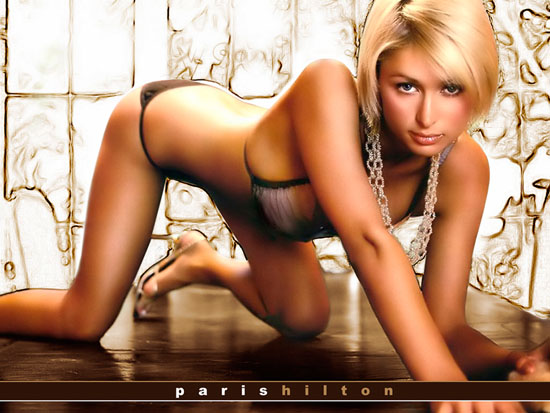
A pioneer in the publication of intimacy.
“Judgment and taste publish their intimacy?” How? In a book? Through the reading of the banns or distribution of a sex tape? In Arendt’s terms, how does judgment, which is not judgment at all but rather the ability to think like everybody else in a public forum, “publish its intimacy” in Woolley’s kitchen, and how can it do so with “taste,” which is not alimentary or taste in any other received meaning of the word.
Either none of this means anything or all, not least in terms either of Woolley or Arendt, or it is a ludicrous attempt to apply whatever philosophical mechanism allegedly is at work to everything. Either way is it, as Rosenbaum claims of Arendt’s most famous phrase, another “sign of shallow thinkers attempting to seem intellectually sophisticated?” (Rosenbaum)
Giving Lupton every theoretical benefit of doubt, the question still would hang over “Thinking with Things:” Why such pretentious, hideous prose? Nothing justifies it.
16. Back to a beginning of sorts.
We have travelled far from Cooking People , particularly in abandoning it, or them, for the person of Arendt. Waugh herself, however, might have done more to arrest our attention. Her description of Woolley’s life and work is cursory, covering only a line or so more than two pages with another five about her books. Then again Lupton gives us even less, only a paragraph, while Hobby interweaves her narrative of Woolley’s life and work in synthesis with other female figures from the age in the better of the three treatments.
Notwithstanding her genetic inheritance, the infelicities of Cooking People go beyond its title. Waugh is an awkward writer prone to the hackneyed trope and awkward phrase. The begins with her “in a tiny restaurant in a tiny village in France.” There, she claims, “I cried with joy at my main course.” Even though Somerset in the 1970s “was in culinary terms the back of beyond,” her mother’s mashed potato is “the best in the world” and her parents ensured that she was “early trained to know what was what in the food stakes;” all this cliché on a single page. (Waugh 1)
To introduce Woolley, Waugh explains that following “the jumble of the Civil War, society was on the move…. Those on the up and those on the down both had a lot to learn about how to run a household,” which can be said of any culture at any time and could be written in better prose. Other sentences are clumsier: “Many a Wodehousian denouement is come to through the fear of Anatole’s leaving.” (Waugh 17, 9)
Anachronism also infects Cooking People. The equation of Woolley’s work to the work of Mrs. Beeton and Gary Rhodes is as incongruous and insupportable as it sounds, while the proliferation of French preparations, and her insistence that she had mastered French technique, belies Waugh’s insistence that Woolley “represents the ranks of the middling classes who wanted good honest English traditions respected.” (Waugh 23)
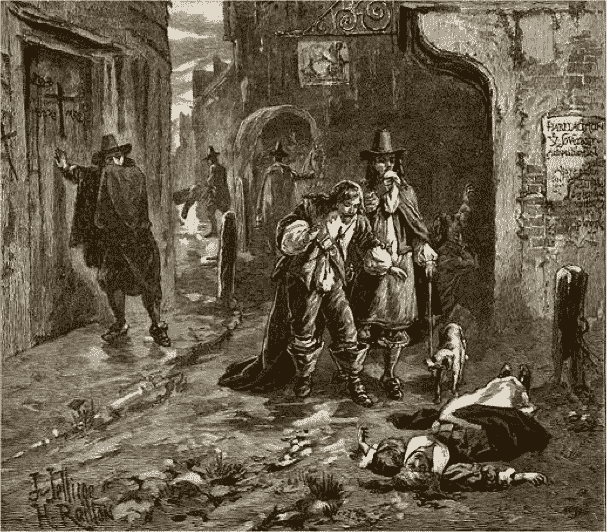
On the move.
The middling sort may have been Woolley’s biggest market, but as we have seen from Elaine Hobby, and as Waugh herself recognizes a page away from her assertion that Woolley represents only the middling classes, she “was trying to make a living; she had to appeal to as wide an audience as possible,” which dictated inclusion rather than exclusion when it came to culinary styles.
Waugh claims that reference by Woolley “to cookery as a ‘commendible art’ gives the housewife turning to the recipes a sense not just of purpose but of creativity.” Art in context, however, referred to the archaic usage of the word, as learning or method and does not connote creativity.
Waugh adds: “At the beginning of the eighteenth century there had been a passing fashion for ordering cookbooks alphabetically, but Woolley did not go for that,” but Woolley wrote in the seventeenth century, before the onset of the ‘fashion.’ (Waugh 24)
The problematic nature of Cooking People is a shame. Despite her flaws as historian and author, Waugh’s prose reflects a personality that appears curious, compassionate and kind: It would be a terrible surprise if Waugh were not wonderful company. And in her defense, it would not appear that she has had a particularly rigorous readership in mind. Cooking People includes no footnotes or endnotes, no bibliography, not even an index. Even so, anachronism at least is anathema and we would be justified in expecting better from a Waugh.
17. Does anyone want to write a culinary biography?
It seems sad that the choice of secondary sources about Woolley traipses from the anachronistically risible “Dinner Party” past Lupton’s absurdist obscurantism to the superficiality of Waugh. Perhaps the Editor has done no better, but at least the warning sounds. It is a sorry segment of the seventeenth century we survey, and the observation applies to more than the era’s obsession with sugar.
Sources:
Hannah Arendt, The Human Condition (2d Ed. Chicago 1998)
Gretchen Gerzina, Carrington: A Life (New York 1989)
Adam Gopnik, “Cooked Books: Real food from fictional recipes,” The New Yorker (9 April 2007)
Elaine Hobby, Virtue of Necessity: English Women’s Writing 1649-88 (London 1988)
Irving Louis Horowitz, “Assaulting Arendt,” First Things , www.firstthings.com/article/2010/02/assaulting-arendt (February 2010) (accessed 28 June 2015)
Julia Reinhard Lupton, “Thinking with Things: Hannah Woolley to Hannah Arendt,” postmedieval--crowd review , https://postmedievalcrowdreview.wordpress.com/papers/lupton/ (undated draft) (accessed 5 June 2015); later published at Postmedieval: A journal of medieval cultural studies (2012) 3, 63-79
Maureen Mullarkey, “The Dinner Party is a Church Supper: Judy Chicago at the Brooklyn Museum,” Studio Matters: notes & commentary , www.maureenmullarkey.com/essays/dinnerparty.html (accessed 8 June 2015) The essay originally appeared during 1981, as noted in the text, in Commonweal.
Ron Rosenbaum, “The Evil of Banality: Troubling new revelations about Arendt and Heidegger,” www.slate.com (October 2009) (accessed 26 May 2015)
Sophia Waugh, Cooking People: The Writers Who Taught the English How to Eat (London 2013)
Hannah Woolley, The Gentlewoman’s Companion: or, A Guide to the Female Sex (London 1975), www.womenwriters.library.emory.edu (accessed 10 June 2015)

